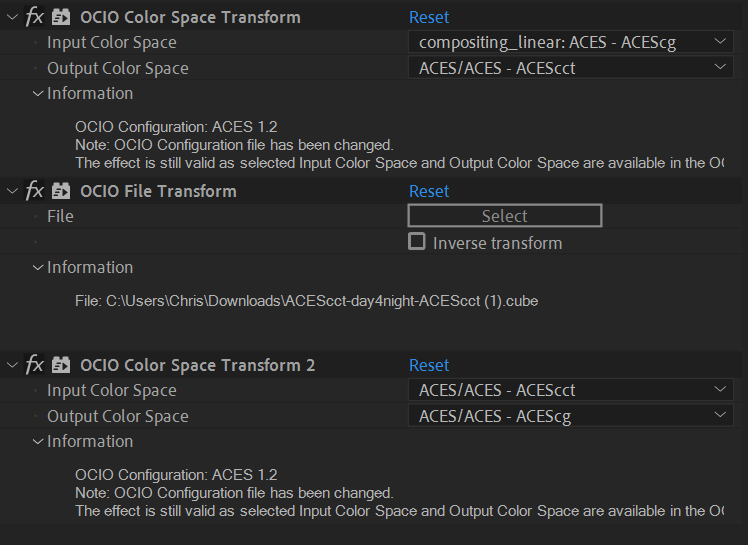have a look at the following doc:
In particular the section " Shot & Show LUT Config & contextual variables."
Here I have the two scenarios I mentioned above:
VFX - ACES Shot Look (Rec.1886 Rec.709 - Display) which assumes the LUT was made in an ACES scene-referred workflow in ACEScct working space (the log color space used for color corrections).
VFX - DPX Shot Look (Non-color managed DPX workflow) for displaying client LUTS from a display-referred non-color managed pipeline. This is typically the case with DPX footage, although a show can have a display-referred pipeline and use EXR files. The key issue is whether the target display EOTF (for example Rec.709) was baked into the LUT, making it display-referred. Here the camera native color space needs to be defined as well as the process space the LUT was generated in.
Both use contextual variables to apply the show or shot-specific look LUT provided by the client to the view. These are defined in the following section at the top of the config file.
# ---------------- Per Shot Grade Variables ------------------------- #
environment:
#--------------
# example path: ../shots/SM_020_018/01_Client_Original_Footage/5_LUT/
#--------------
LUT_PATH: shot_lut/
LUT_NAME: clientShotLUTname_ACEScct.cube
#--------------
# Camera aliases are: ARRIv3_log, ARRIv3_lin, ARRIv4_log, ARRIv4_log
# RED_log, RED_lin, CLog2, CLog3, Panasonic_log, Panasonic_lin, ADX10
# Sony_log, SonyCine_log, SonyVenice_log, SonyVeniceCine_log, Sony_lin, SonyCine_lin, SonyVenice_lin, SonyVeniceCine_lin,
# CAMERA variable is set to ACEScct for ACES EXR workflow, and to camera for DPX for display-referred workflow
#--------------
CAMERA: ARRIv3_log
SHAPER: ACEScct
# ------------------------------------------------------------------- #
You would replace the LUT_PATH and LUT_NAME with the correct names for your environment. if the client is delivering a LUT for display-referred footage, the color space of the original camera should be entered into the CAMERA variable to set the log space for the Shot Look (Non-color managed DPX workflow) display transform. See the above doc for more details.
Here’s the OCIO config with all of this stuff in it:
You’ll want the StdX_shotLut.ocio
Once the config is setup with the Show LUTs, the artist just needs to choose the appropriate View Transform.



